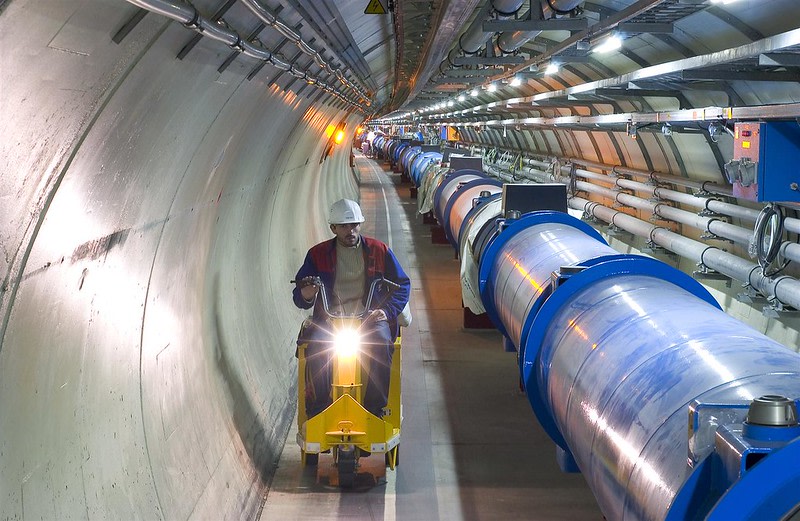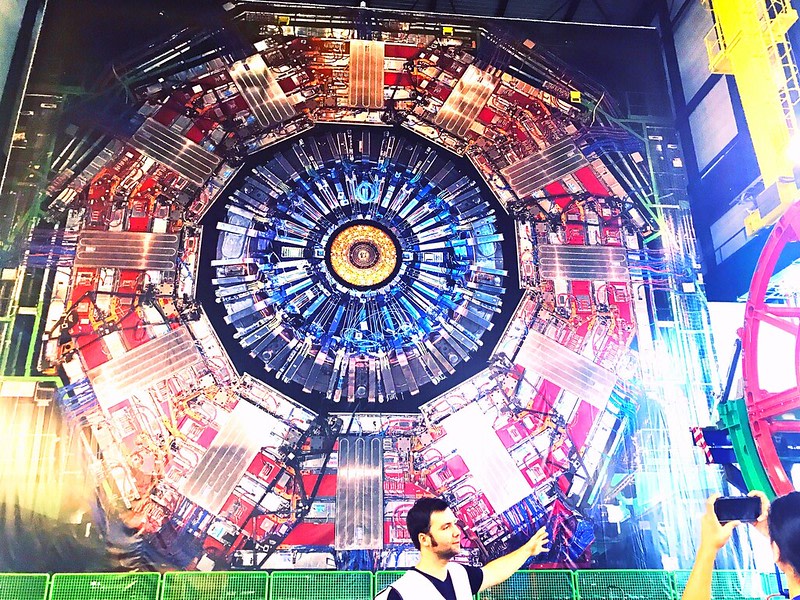What is the universe made of and how did it start?
Last month, he became the first Israeli professor elected to head the Council of CERN, the European Organization for Nuclear Research – a role that connects him and the State of Israel to hundreds of leading physicists around the world who jointly conduct scientific experiments and research on these kinds of topics.
(Credit: Maximilien Brice / CERN)
On the one hand, the organization is on the frontier of research in quantum theory – the theoretical basis of modern physics that explains the nature and behavior of matter and energy at the atomic and subatomic levels.
If you want to go to space but don’t have the money to pay for such a mission privately, then you partner with either the Kennedy Space Center or Baikonur, the launch base for all Russian space missions. , explained Rabinovici. If you want to achieve the highest possible energy, the portal for that is CERN.
“CERN is a place where people from all over the world come together to study the results of collisions at the highest possible energy,†he said.
But there is also a “humanist” aspect to the center, which was founded in 1954 by 12 member countries in the aftermath of World War II, when so many scientists were engaged in “killing each other or finding ways to kill each other. or kill civilians and soldiers. “said Rabinovici.
 CERN / LHC tunnel (Credit: 2005 CERN, photo: Maximilien Brice via Flickr)
CERN / LHC tunnel (Credit: 2005 CERN, photo: Maximilien Brice via Flickr)Rabinovici has been Israel’s representative to the organization for the past 10 years, until the end of 2020. Israel only became a CERN Member State in 2014.
Scientific collaboration generally played a big role in Rabinovici’s career. He was one of the leaders in the creation of the SESAME project, which brought together high-level scientists from Israel, the Palestinian Authority, Turkey, Cyprus, Egypt and Jordan, Iran and Pakistan to build a synchrotron facility in Jordan.
SESAME stands for Synchrotron light for Experimental Science and Applications in the Middle East.
“In the Middle East, we have enough collisions, so it’s not a collider†like the LHC. “It’s called a source of light because the whole of the Middle East needs bright light.”
He explained that in the machine hosted in Jordan, the electrons turn around and produce radiation that looks like a microscope or “heavily involved x-rays.”
“We all worked together to build this machine,†he said. “I think it’s important for your readers to know that there is such a thing in our area where people work together.”
The CERN Council is made up of delegates from 23 Member States and Israel is one of them. The role of the council is to define the policy according to which CERN is to operate.
The center was previously responsible for researching the Higgs boson, the fundamental particle associated with the Higgs field that gives mass to other fundamental particles, such as electrons. It was also responsible for achieving an energy of about 14 trillion electron volts. In 2012, the Higgs particle was discovered. To date, 13 of the 14 trillion electron volts have been reached.
“The Higgs particle has been found. Now the council must resume its role as policy makers, â€Rabinovici said. “Everyone agrees that they want CERN to remain the best way to do high energy experimental physics, to host the best scientists from around the world and to provide the best technology. But the road to achieve this has not yet been decided.
Rabinovici described the discovery of the Higgs particle as a “fantastic and incredible technological feat”.
He said: “We already knew that there should be a particle like the Higgs particle. The difficult thing was to build a machine and detectors that would be able to find it. “
He compared it to finding a grain of sand in the Negev that looks like a Star of David among all the sand particles during a sandstorm.

The LHC is also a major CERN project. The L means large because the machine is 27 kilometers in circumference. The C is for collider.
“When a baby wants to understand how his toys work, what does he do? She breaks it, â€Rabinovici said. “If she wants to see smaller and smaller pieces, she has to break them with more energy. So what interests us is to see what matter is made of. We have to take small pieces of matter, make them collide with each other at the highest energy, to fabricate and observe what comes out of it.
The H is for hadrons, particles that contain quarks and undergo strong nuclear force.
In 2008, a Hawaiian took legal action against CERN to stop the first test of the LHC accelerator, fearing the center would create a black hole that could devour the earth. But Rabinovici said that was never the plan.
“In science you never say zero,” he said, but the chances of CERN creating a deadly black hole are “much, much smaller than your probability of having an accident when crossing the road” .
WHEN NOT focused on CERN, Rabinovici’s own work centers on studying various properties of gravity.
“We, as humans, are very lucky to live in an environment where gravity is low, otherwise we would be torn to pieces,†Rabinovici said. “But at the beginning of the universe or around black holes and so on, gravity is strong. What Happens When Gravity Is Strong? What are the possibilities ? This is the kind of research that I am engaged in.
He said he is a “theoretical physicist” who is “paid not to enter the lab,” but as he takes on this new challenge, his work will likely have a real impact on understanding the world in which we are. let’s live.
 Universo Viviente
Universo Viviente



